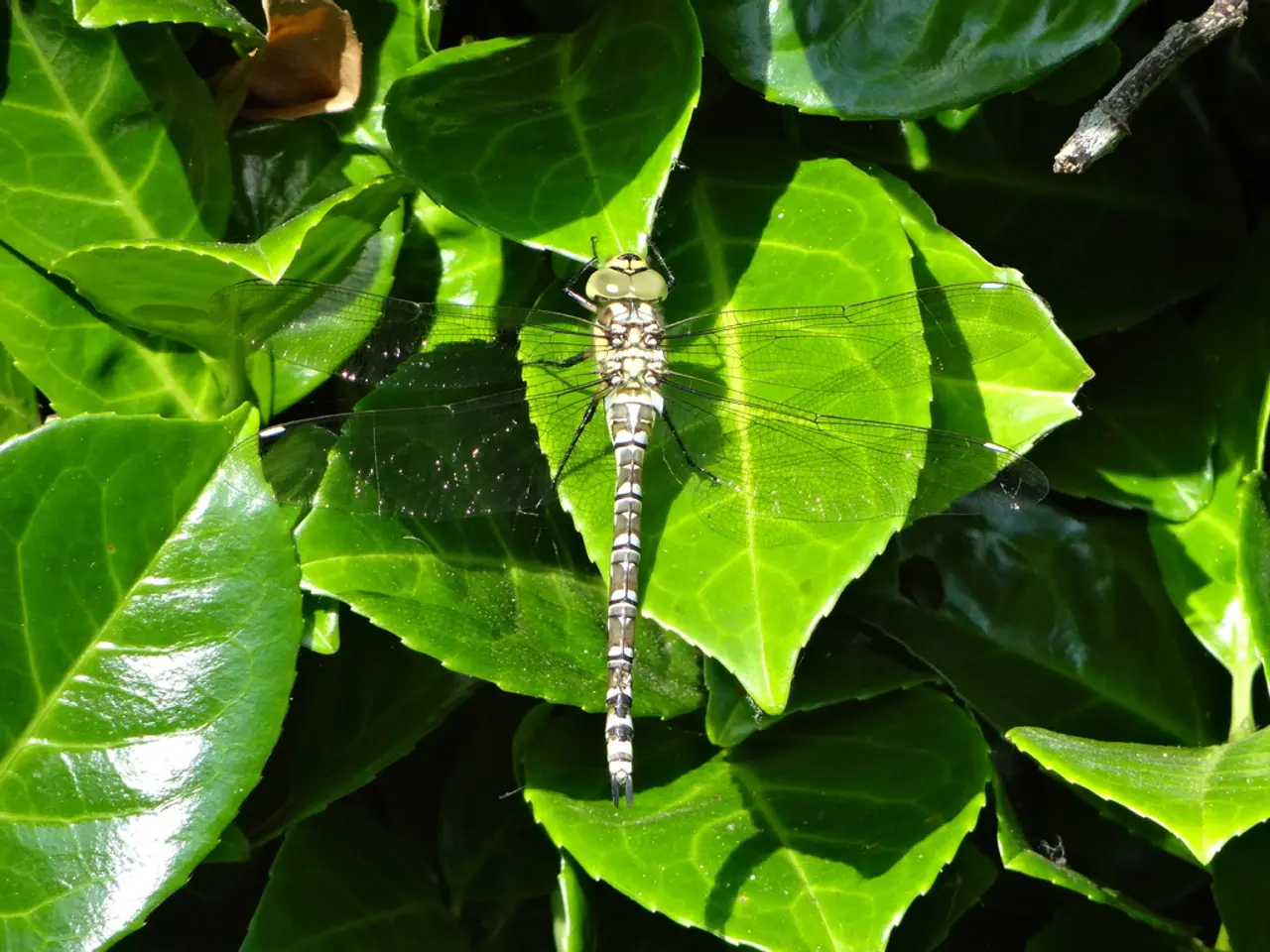Increase in infections of Chikungunya virus in China
A Growing Threat: Chikungunya Outbreak in Southern China
A significant outbreak of the mosquito-borne disease, Chikungunya, has been unfolding in the Guangdong Province of southern China since July 2025. This outbreak marks a concerning expansion in the virus's geographic footprint, affecting a densely populated, subtropical region with extensive trade and travel links.
The current outbreak in China is part of a broader global trend of increasing Chikungunya outbreaks in multiple countries and territories, including Réunion, Mayotte, Mauritius, and parts of Africa and the Americas. In fact, the World Health Organization (WHO) warns of a potential large epidemic comparable to the major Indian Ocean epidemic of 2004-2005.
Chikungunya is not a new virus, but it is rare in China. The disease, named after a Kimakonde phrase meaning "to bend upwards or to contort," due to the painful joint symptoms it causes, has historically been more prevalent in tropical regions like Africa, Asia, and the Americas. However, the 2025 outbreak in southern China is a stark reminder of its potential to spread into new areas.
Officials in Foshan, the epicentre of the outbreak, are taking drastic measures to control the spread. Soldiers are fogging the streets with insecticide, and officials are going door to door looking for stagnant water where mosquitoes can breed. Infected individuals are being forced to isolate themselves to prevent further transmission.
However, some experts argue that a more targeted and less coercive approach could prove equally effective. Dr. Huang, a public health specialist, suggests that a more targeted approach could help to minimise the disruption to daily life and the potential for unintended consequences.
Currently, there are two vaccines for Chikungunya, but they are not widely available. Doctors usually prescribe rest, hydration, and pain medication for the disease, as there is no antiviral treatment available.
Despite the global increase in Chikungunya cases, it is important to note that the disease is not as deadly as COVID-19. It can only spread through mosquito bites and not directly from person to person. If you get bitten by an infected mosquito, the virus usually starts to cause symptoms within a few days.
As climate change continues to make more places mosquito-friendly, scientists predict that Chikungunya outbreaks could become more common. Mosquito control is considered the best prevention for Chikungunya, given the lack of antiviral treatment and limited vaccine availability.
The 2025 Chikungunya outbreak in southern China is a reminder of the ongoing global challenge posed by this mosquito-borne disease. With over 240,000 cases reported worldwide this year, primarily in South America, Africa, and parts of Southeast Asia, it is crucial that efforts to control the spread of Chikungunya are stepped up, especially in regions like China, where the disease is relatively new.
Reported by Jonathan Lambert for NPR News.
References: [1] Centers for Disease Control and Prevention (CDC). (2025). Chikungunya. https://www.cdc.gov/chikungunya/ [2] World Health Organization (WHO). (2025). Chikungunya. https://www.who.int/health-topics/chikungunya#tab=tab_1 [3] World Health Organization (WHO). (2025). Chikungunya: Situation update. https://www.who.int/news-room/articles-detail/chikungunya-situation-update-11-october-2025 [4] BBC News. (2025). Chikungunya: What is the disease spreading in China? https://www.bbc.com/news/world-asia-china-59128163 [5] U.S. Centers for Disease Control and Prevention (CDC). (2025). Chikungunya Travel Information. https://wwwnc.cdc.gov/travel/page/chikungunya-travel-information
- The news of the Chikungunya outbreak in southern China is a warning about the growing threat of this disease.
- The current outbreak is part of a broader trend of increasing Chikungunya outbreaks across various countries and territories.
- The World Health Organization (WHO) has issued a warning of a potential large epidemic similar to the Indian Ocean epidemic of 2004-2005.
- Chikungunya is usually more prevalent in tropical regions like Africa, Asia, and the Americas, but it has now been detected in China.
- The disease got its name from a Kimakonde phrase that means "to bend upwards or to contort" due to the painful joint symptoms it causes.
- The authorities in Foshan, the epicenter of the outbreak, are employing drastic measures to control the spread, including street fogging with insecticides and door-to-door inspections.
- Some experts suggest a more targeted and less coercive approach to prevent the disruption to daily life and unintended consequences.
- Currently, there are two Chikungunya vaccines, but they are not widely available.
- Doctors usually prescribe rest, hydration, and pain medication for Chikungunya as there is no antiviral treatment available.
- The disease is not as deadly as COVID-19 and can only spread through mosquito bites, not person-to-person contact.
- Climate change is predicted to make more places mosquito-friendly, potentially leading to more frequent Chikungunya outbreaks.
- Given the lack of antiviral treatment and limited vaccine availability, mosquito control is considered the best prevention strategy for Chikungunya.
- The ongoing global challenge of Chikungunya necessitates increased efforts to control the disease, especially in regions like China, where it is relatively new.
- Over 240,000 Chikungunya cases have been reported worldwide this year, primarily in South America, Africa, and Southeast Asia.
- As the threat of climate change increases, so does the potential spread of mosquito-borne diseases like Chikungunya.
- In the context of workplace-wellness, employers should keep track of the impact of Chikungunya and other environmental factors on employee health.
- Chronic diseases like Chikungunya can have long-term effects on an individual's health and productivity, impacting their overall quality of life.
- In the field of environmental science, climate change and its effects on public health, such as the spread of Chikungunya, are critical areas of study.
- Sleep disorders and other medical conditions, such as respiratory conditions, digestive health issues, eye-health problems, and hearing problems, can compromise an individual's health and wellness.
- Fitness and exercise are important aspects of maintaining overall health, including helping to boost the immune system to better fight off diseases like Chikungunya.
- Sexual health is an essential component of an individual's overall health and well-being and requires regular attention and preventive care.
- Autoimmune disorders like rheumatoid arthritis, lupus, and multiple sclerosis may be affected by environmental factors such as climate change, making management and treatment even more crucial.
- Cancer research is ongoing, and advancements in therapies and treatments are being made to improve patient outcomes and increase survival rates.
- Nutrition plays a vital role in maintaining good health and supporting overall wellness, from managing weight to reducing the risk of chronic diseases.
- Aging is a natural part of life, but it can also present challenges with regards to health and wellness, such as increased susceptibility to chronic diseases and degenerative conditions.
- Women's health encompasses various aspects, including reproductive health, gynecological care, and maternal health, and requires comprehensive care throughout the lifespan.
- Parenting is a crucial role in everyone's life, and managing the health and wellness of children is a major concern for parents everywhere.
- In the retail and automotive industries, the impact of climate change on business operations, including supply chains and product development, is a topic of concern.
- Investing in businesses that prioritize health and wellness, environmental sustainability, and climate change solutions can be a wise decision for the future of the finance industry, as well as for the benefit of society as a whole.








